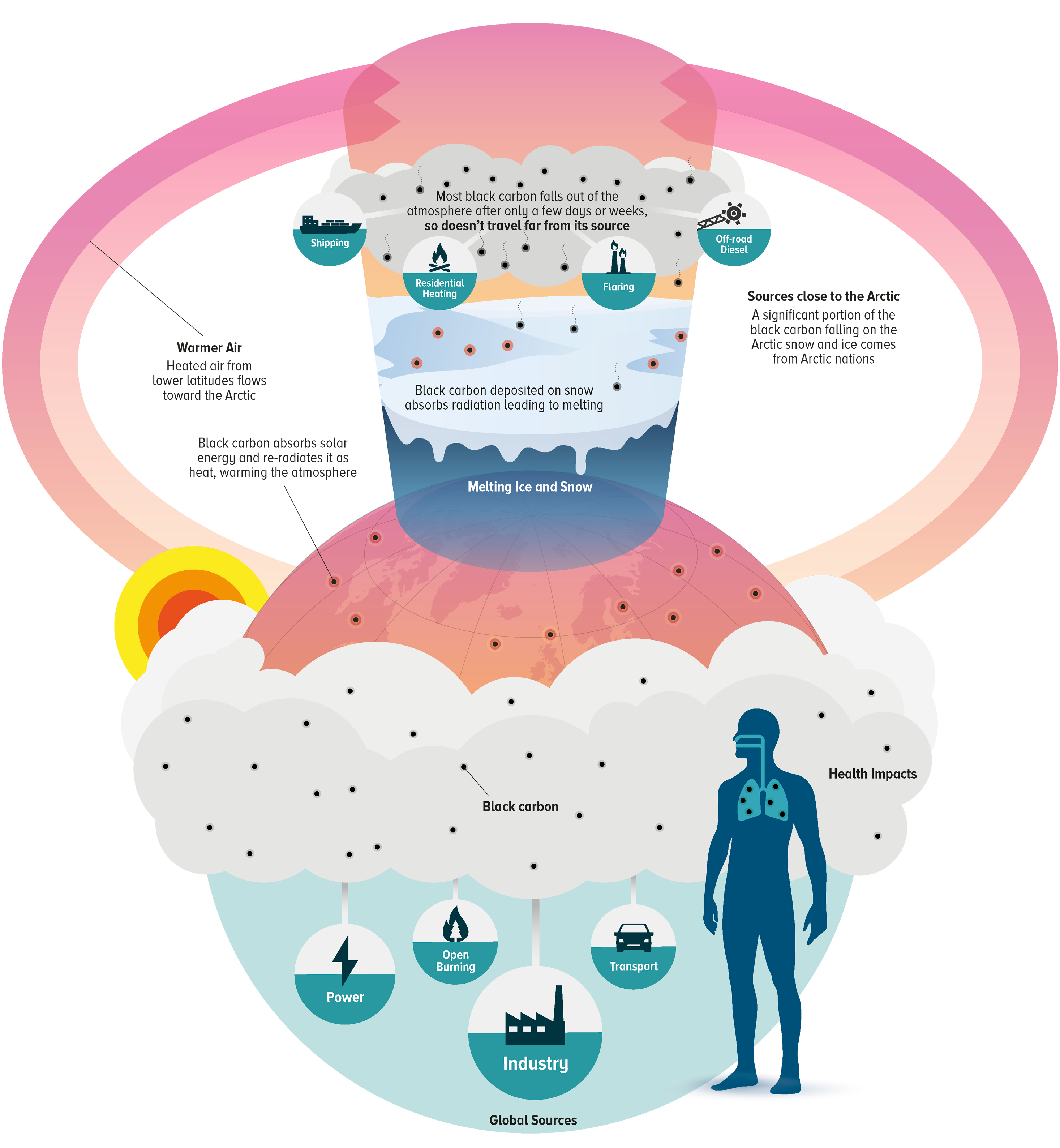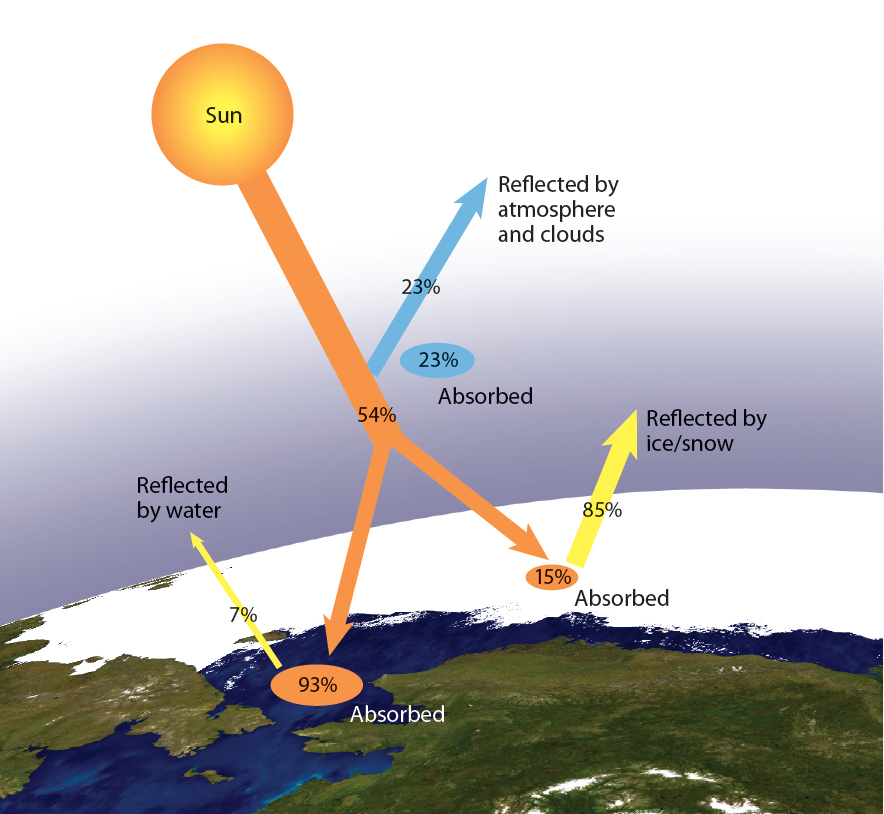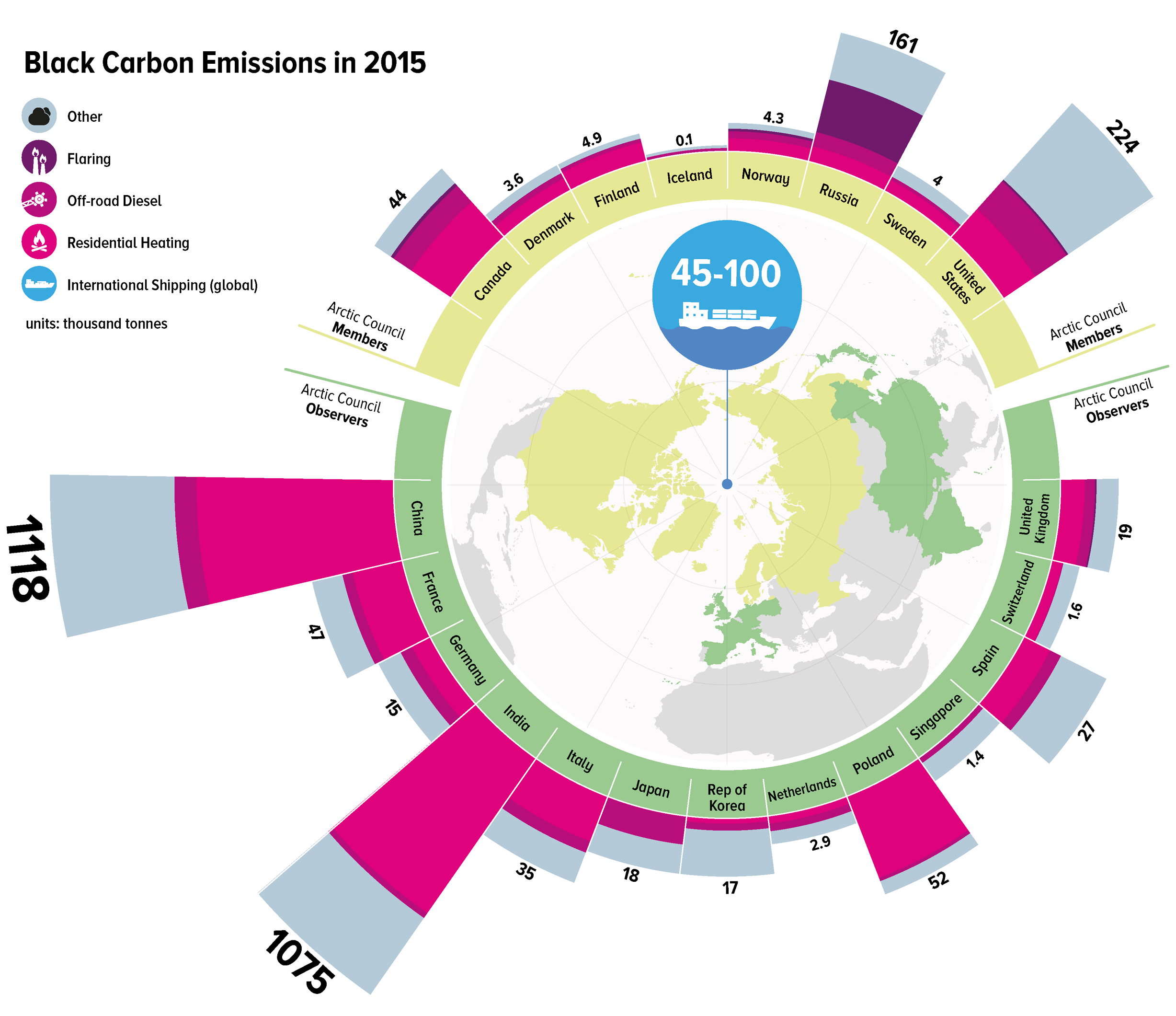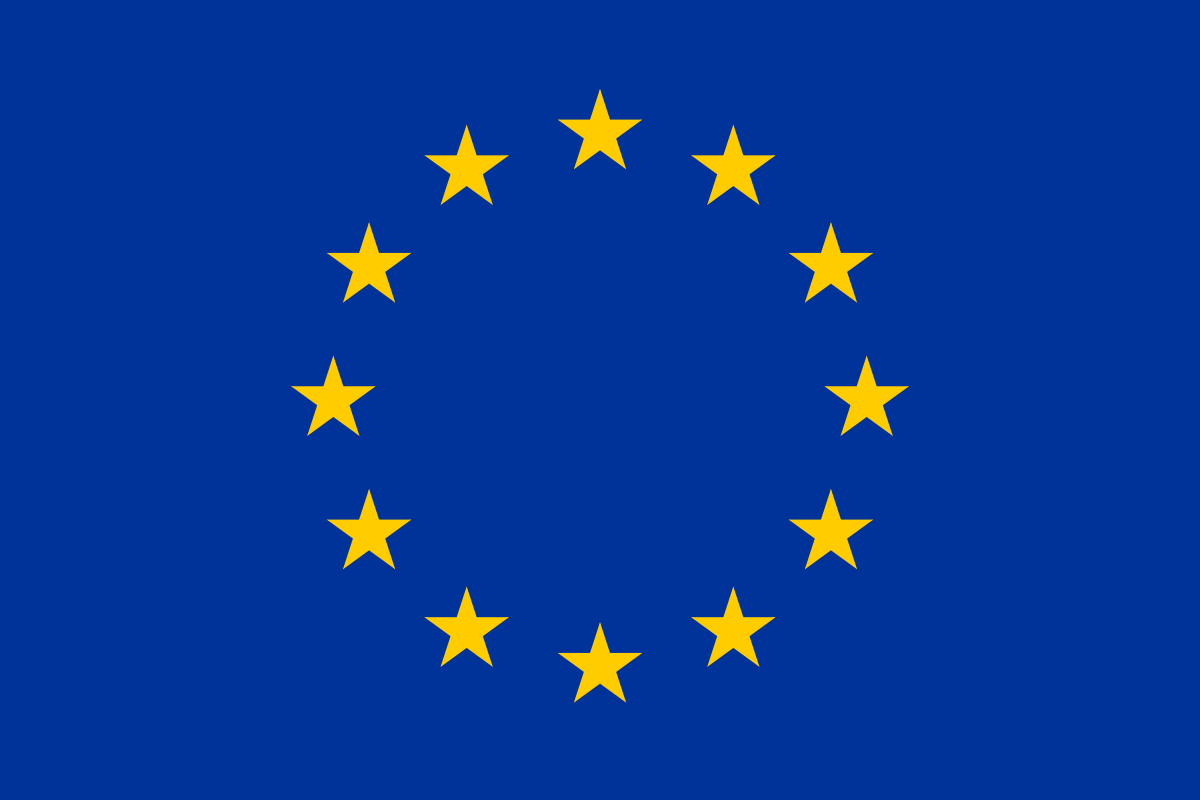The Background
Why is Black Carbon a concern in the Arctic?
What Is Black Carbon?
Black carbon—commonly known as soot—is a tiny particle formed by the incomplete burning of fossil fuels, biofuels, and biomass. Although it remains in the atmosphere for just a few days or weeks (compared with a century or more for carbon dioxide), it is a major short-term contributor to global warming. Scientists estimate that black carbon’s impact on the Earth’s climate is exceeded only by that of carbon dioxide and methane. It can also exacerbate respiratory and cardiovascular illnesses in people.
What Are The Climate Impacts Of Black Carbon Emissions?
In the atmosphere, black carbon affects the Earth’s temperature by absorbing solar energy and releasing it as heat. Warm air flows from lower latitudes to the Arctic. When it falls out of the atmosphere onto ice or snow, black carbon warms the surface and dramatically increases the rate of melting.

Because snow and ice reflect solar energy back out to space, reductions in their extent lead to more warming. This feedback loop is one reason why the Arctic is warming more than two times faster than the rest of the world.

Studies suggest that black carbon has contributed significantly to recent warming in the Arctic. Its short lifetime in the atmosphere means that reducing black carbon emissions can have immediate benefits, allowing nations to quickly slow warming in the Arctic and elsewhere while they work on longer-term measures to address global climate change.
What Are The Health Impacts Of Black Carbon Emissions?
Emissions of black carbon are detrimental to human health, where the particles contribute to heart, circulatory and respiratory diseases, and to premature deaths. The particles can also gather toxic substances that enter directly into human bodies and also affect people and animals indirectly via the food web. Health risks are especially relevant close to sources of black carbon, where air concentration can be high.
Where Do Black Carbon Emissions Come From?
Important natural and human sources of black carbon emissions include wildfires, the burning of agricultural and solid waste, residential wood burning, gas flaring, maritime shipping, and the combustion of diesel fuel. Arctic nations are responsible for about a third of the Arctic warming caused by black carbon, even though they produce only about 10% of global human black carbon emissions. Most black carbon particles do not travel far from their source, so emissions produced closest to the Arctic tend to have the greatest impact.
Countries that are members and observers to the Arctic Council are responsible for a significant amount of global black carbon emissions. Only a small part of these emissions occur in Arctic regions, but even emissions further south cause Arctic warming, as described above. Black carbon emissions that take place close to, or within the Arctic region itself have a disproportionately larger influence on Arctic warming due to their effect when deposited on snow and ice.


This project is funded by the European Union
The ABC-iCAP will be implemented over two-years (2022–2023) supported by an EU Partnership Instrument grant of almost 820,000 EUR.
